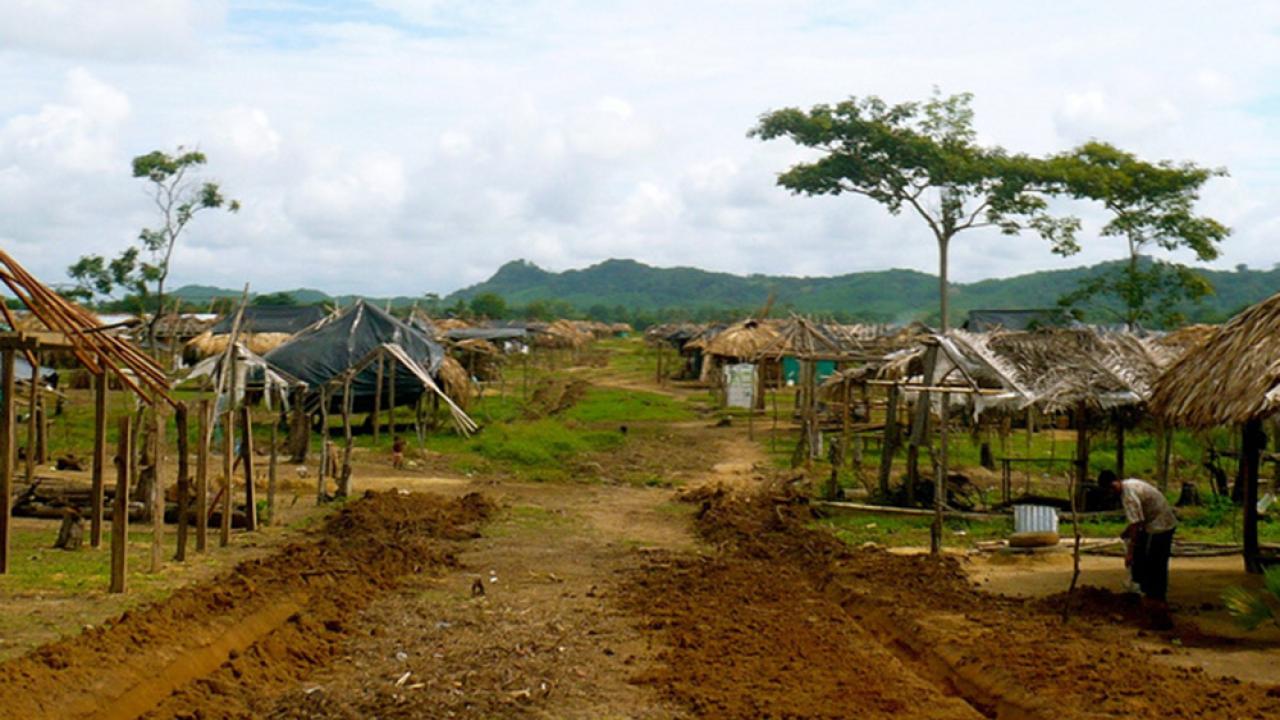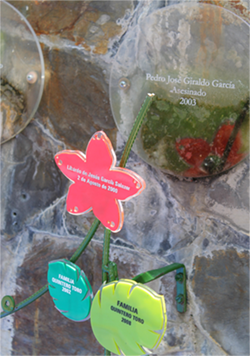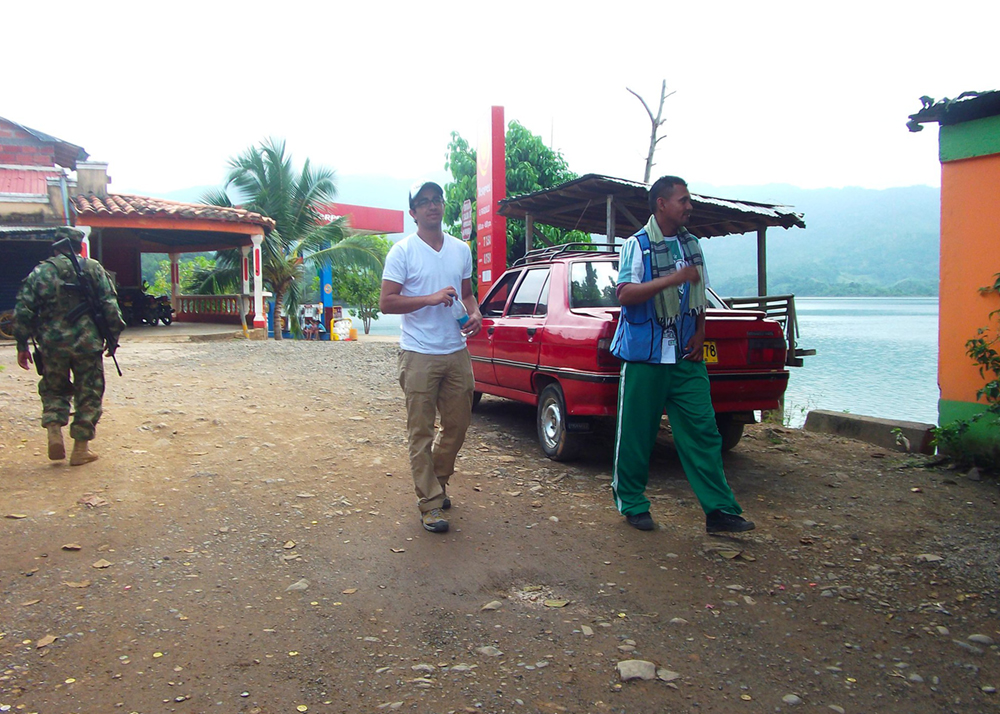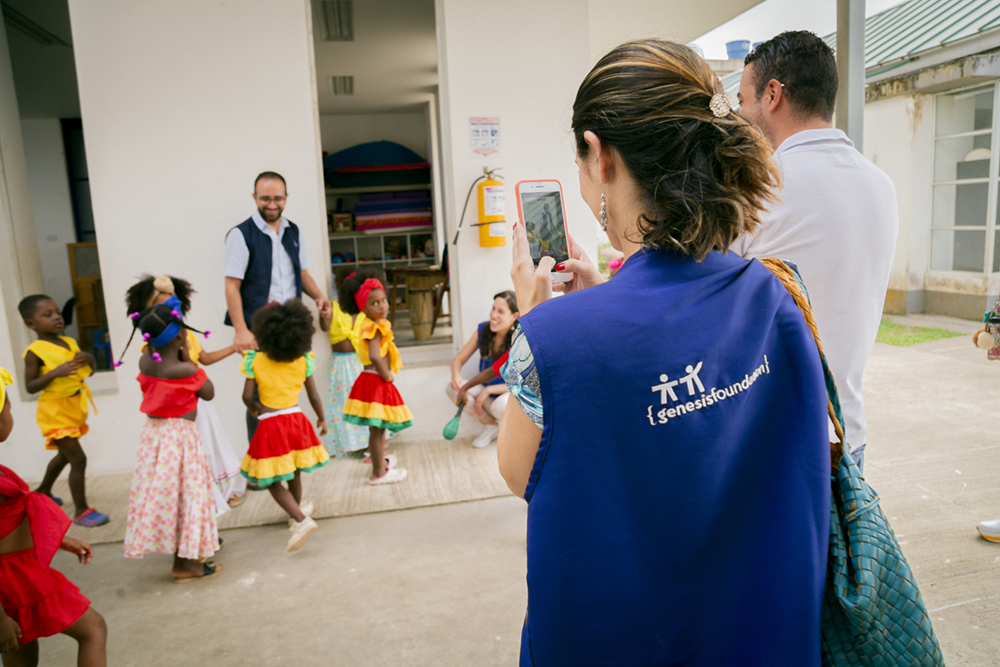
Promoting Recovery and Resilience During Conflict in Colombia
While conducting field research in rural Colombia in 2011, Andrés Moya interviewed a man who told him about the paramilitaries who had recently taken his arm just below the elbow. A rival group passing through had forced his brother to give them a couple chickens. For this his brother was killed. Then they cut off this man’s arm.
“Just telling these stories can create psychological distress,” said Moya, an associate professor of economics at the University of the Andes. Moya stayed with the man for a couple hours after the interview. For a week, a local Catholic priest joined Moya to pay follow-up visits. Moya kept in touch for six months.
In over sixty years of armed conflict in Colombia, more than 220,000 have died and millions have been displaced, creating poverty and hardship that could last for generations. Colombia is far from alone. Among Feed the Future’s target countries, Mali, Niger, Nigeria and others face ongoing armed conflict. Research like Moya’s is seeking insights on promoting mobility and resilience even in these extreme environments.
“Violence might have very serious effects on economic decision making, creating a vicious cycle of poverty that reinforces itself,” said Moya. “There also can be positive cycles of social mobility and better mental health. How to design a comprehensive approach to post-conflict recovery is a key challenge.”
The Tangible Impacts of Conflict
“The impacts of conflict are both extreme and extremely large,” said Ana María Ibáñez, a professor of economics at the University of the Andes. Ibáñez is the leading expert on conflict and displacement in Colombia.

Ibáñez describes conflict as an economic shock but one that is fundamentally different than a natural disaster or market failure. For example, even in a drought that completely destroys that year’s crops, people may still have support from family and friends. They’ll still have their land. Their children can continue to go to the public school.
“What happens with conflict is that they face all the possible consequences of an economic shock at the same time, which makes it much harder to overcome,” said Ibáñez.
People are often forced to leave on short notice, leaving behind their land and all they had invested into it over a lifetime as well as everything they own. If they end up in an urban area, their skills in agriculture will not help them make a living.
In a 2006 report to USAID, Ibáñez and Moya put dollar amounts on these losses. People displaced by conflict have lost 1.2 million hectares of land worth $976 billion in 2006 dollars with a resulting income loss of an estimated $3.3 billion. Ibáñez stressed that these numbers have risen significantly. At the national level, losses in productivity were an estimated 2.1 percent of agriculture’s share of GDP.
Ibáñez said that conflict also destroys the social networks people rely on for social and financial support. The risk of violence can force people to work only on their own land. While men are more likely to be victimized or to get involved as combatants, women are victims of both of sexual violence and the chance they will be forced to become the main breadwinners for their families.
“In rural areas, women are mostly dedicated to household chores and almost never connected to markets,” said Ibáñez. “From one moment to another, with all the trauma of losing her husband, a woman can be forced to provide for her family with none of her husband’s networks or social capital.”
Theory to Understand the Intangible Impacts of Conflict
Beyond those financial losses are impacts that are harder to put a number on. It was during field work with Ibáñez that Moya first saw the psychological trauma caused by violence. It had a tangible impact on people’s lives but he didn’t know how to measure it like the loss of land or income.
“I thought this was way beyond inquiry in economics,” said Moya. “I didn’t see how development economics can be useful to understand these things.”
When Moya came to UC Davis to pursue a Ph.D. in agricultural and resource economics, he worked with Michael Carter, director of the Feed the Future Innovation Lab for Assets and Market Access. Carter has spent his career studying poverty dynamics.
“Economic behavior is driven by what people aspire to achieve,” said Carter. “Violence can hinder people’s willingness to try to make the best out of what they have, which contributes to the persistence of poverty.”
Carter and Cornell University economist Chris Barrett used field data from Kenya and other developing countries to understand the factors that determine a family’s likelihood of poverty over time. Their model of poverty traps was based on levels of assets and capabilities that could be so low that poverty becomes self-reinforcing.
By the time that Moya came to UC Davis, it was becoming clear that the experience of poverty itself was another dimension. If violence worked in the same way, the experience of violence might also create a state of extreme hardship that is self-reinforcing—a poverty trap.
To establish the relationship between violence and poverty, they chose measures from the psychology literature they thought would be most appropriate, like a standard measure of depression and anxiety. They wanted to understand the impact of violence not at the district or community level but at the individual level.
“There are some people who live in these communities who can get on with their daily lives,” said Carter. “For people who have been attacked or who have seen their families killed, it’s different. They are the ones who carry the scars.”
The Experience of Violence Impacts Likelihood of Poverty
Moya returned to rural Colombia to survey two groups of people who were displaced by violent conflict. The people in both groups had experienced similar levels of material losses and risk, except that the people in one group had directly experienced various levels of violence and the others had not.

Before going to the field, Moya received training to mitigate any distress the survey might cause. He and his local survey team could activate a network of assistance through the local municipalities and the Catholic Church.
They spoke with 344 victims of violence, including 132 people who had been victimized and displaced all at once by crossfire from armed groups. Over 90 percent had been exposed to at least one violent event, from threats to surviving a massacre. Moya said that the people were eager to talk about their experiences.
“This was something that was very powerful but it tells you about how isolated and how vulnerable they were,” said Moya.
The results of the study showed that people who experienced more severe violence were more likely to believe they would be extremely poor in the following year. The people who experienced the most violence were three times as likely to expect to live in extreme poverty than people who experienced the least violence.
“These results suggest the other kinds of reactions violence can induce beyond only economic loss, like depression, anger or a general distrust of others that reduces a person’s ability to make a living,” said Carter.
Promoting Recovery Post-conflict and Resilience
When Moya puts these results into context, he uses the number nine million. That’s nearly how many people in Colombia, about one in five, who have officially registered as victims of a conflict that remains ongoing.
Worldwide, that number is much higher. Data from the Uppsala Conflict Data Program (UCDP), the world’s main provider of data on organized violence, recorded 49 state-based conflicts active in 2017 that caused 90,000 deaths.
“Conflict areas are very similar,” said Ibáñez. “In active conflict areas you need humanitarian assistance and support for the people who decide to migrate and to try to reduce the cause of conflict. In post-conflict there are really a lot of opportunities for development.”
She said that the government of Colombia has been proactive in assisting those who have been victimized. This includes a safety net for displaced populations and efforts to promote socioeconomic inclusion. In 2015 the government established a National Land Agency (ANT) to help ensure access to land for poor farmers and to formalize ownership for those without documentation.
Rebuilding communities is also critical, said Ibáñez. Anger and fear can become significant obstacles once a conflict has ended, in part because many of the people who perpetrated violence against them and their loved ones are now living and working in the same communities.
“What I have seen in Colombia is that policies and programs at the community level to increase social cohesion have been very successful,” said Ibáñez. “Otherwise communities have a very difficult time working together.”
Moya said that providing psychological and social support is especially important, particularly for women with children. Since 2013 he has been collaborating on the design, implementation and evaluation of Semillas de Apego, an program for mothers who have been exposed to violence in Colombia.

“We know this is important because children are severely exposed and affected by violence, especially before five years of age,” said Moya. “It can ruin their lives even if they aren’t directly exposed. It’s the stress of living in a dangerous place.”
Though the psychological and social impacts of violence are different than the immediate financial impacts, Moya said they are just as important.
“Try not to think about economic assets as one side and psychological and social assets as a separate side,” said Moya. “Thinking about synergies between the two is a positive way to facilitate recovery and resilience.”
